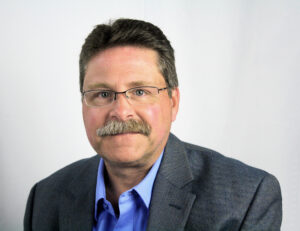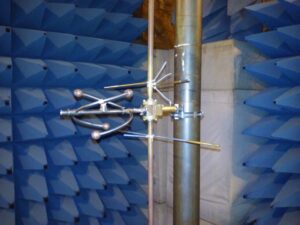Dielectric and Merrill Weiss Group file Petition for Rulemaking with the FCC, clearing the path for first computational directional FM antenna pattern modeling
Dielectric has changed how FM broadcast antenna manufacturers validate directional pattern studies for new FM broadcast antennas. Dielectric’s groundbreaking research resulted in the recent FCC filing of a Petition for Rulemaking, written with leading broadcast consultancy, Merrill Weiss Group, and expected to be approved this fall.
The new rule paves the way for the first directional FM pattern verification rule change in 58 years — a rule change that passes the torch from physical to AI-driven simulated modeling. Merrill Weiss, principal of Merrill Weiss Group, offered his expertise on existing FCC rules while assisting with the writing and filing process.
The inspiration behind Dielectric’s effort is to provide FM broadcasters with a more efficient and economical antenna modeling process. FM broadcast antenna manufacturers today build physical models and collect measured data to verify antenna patterns – a time-consuming and burdensome process. Dielectric’s petition proposes that the FCC allow FM antenna manufacturers to transition to computer-based antenna modeling using computational methods – an approach widely used in other broadcast products. In fact, this technique has been used for TV station antenna modelling since 2017.

“This is simply long overdue,” said Dielectric’s Vice President of Engineering, John Schadler. “FM is the only FCC service that still requires a physical range measurement, and anyone who has worked with range measurements knows that accurately measuring radiation patterns is extremely difficult. Simulated pattern verification is much more economical with less chance of error — it just makes sense.”
The clearance to leverage simulated antenna modeling will also result in better accuracy for broadcasters.
“3D high-frequency simulation will, in many ways, yield results that are superior to traditional range measurement proofs,” said Schadler. “Since simulations are done in a true free space environment, any issues with the range or anechoic chamber and with the surrounding environment are eliminated, resulting in more reliable azimuth patterns and H/V ratios.”
The use of software also eliminates the lengthy set-up and take down time of models, as well as the need for a technician to adjust the model and take data points by hand. This removes mechanical tolerances and human error affecting the data. Another advantage of designing in a virtual environment is that the geometry can be completely optimized and not compromised by time, materials and tolerances.

Schadler adds that since the start of Repack in 2017, Dielectric has shipped more than 1000 TV antennas using a virtual-only design processes, which has both accelerated design timelines and eliminated the traditional physical design process. Many of these designs have been field verified, further supporting the accuracy of computer simulations.
“It is safe to say that it would have been essentially impossible to design, manufacture, test, and install this many antennas to successfully complete the Post-Incentive Auction Spectrum Repack, in the minimal time allowed, without the use of virtual simulation,” said Schadler. “Another fallout of Repack is that we created a new crop of engineers – HFSS computer simulation super users. ANSYS HFSS is a 3D electromatic simulation software tool for designing, simulating and evaluating high-frequency components. New opportunities such as FM pattern studies will take advantage of our engineers’ new expertise.”
HFSS adds a great deal of efficiency to the measurement process as well, according to Schadler. The software can make small changes very efficiently to completely optimize radiation patterns and not be constrained by time and material. This replaces the time-consuming trial-and-error procedures that engineers and technicians have lived with for nearly six decades.
What’s perhaps most interesting to the broader broadcast industry is how Dielectric’s innovation introduces AI into the RF world. According to Schadler, there is much more to come from Dielectric following its pioneering use of the technology in their already game changing approach to FM pattern verification.
“We are looking at how external scripts can be used to make smart decision geometry changes based on previous iterations.” said Schadler. “We see a lot of opportunity for AI and simulation in RF moving forward.”



